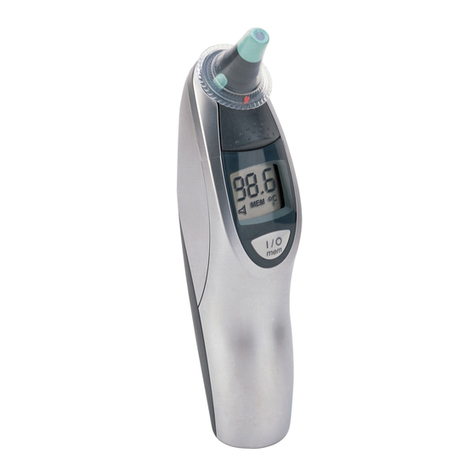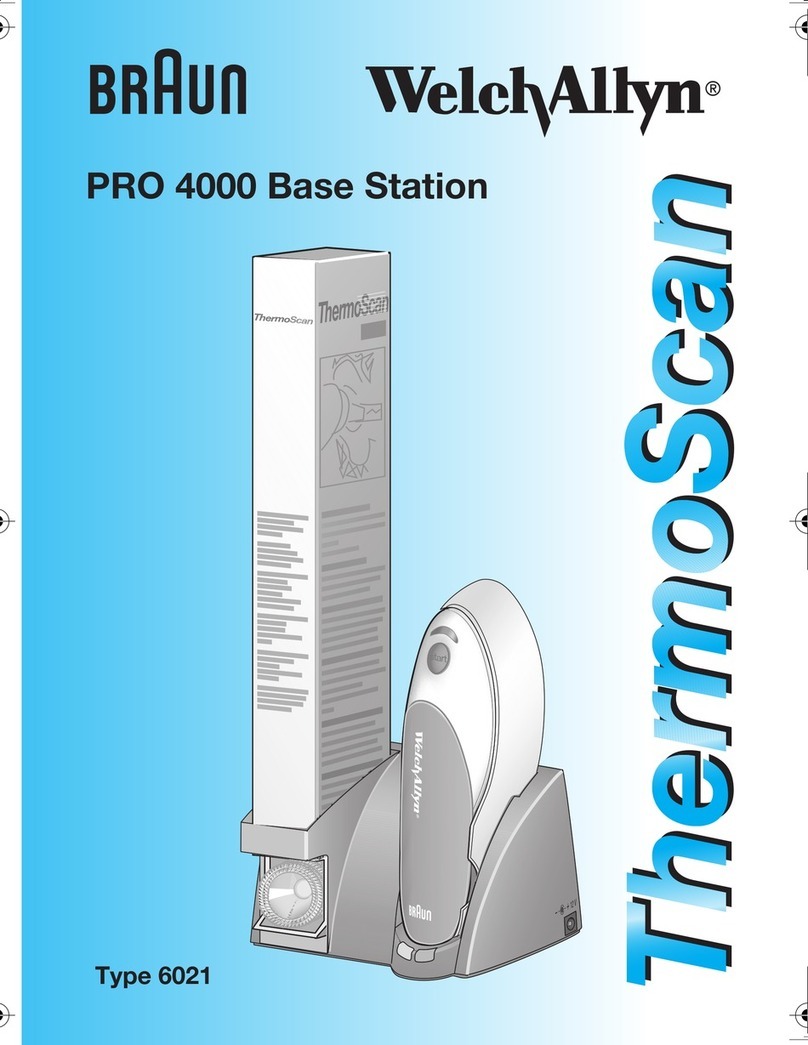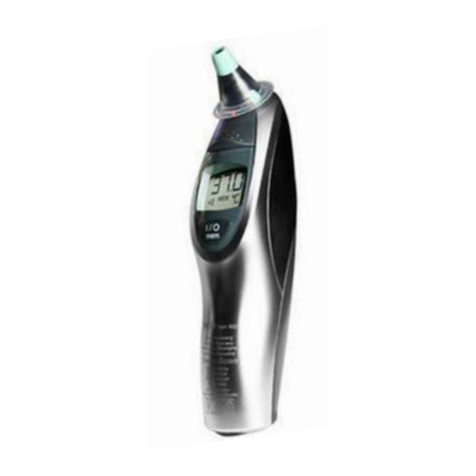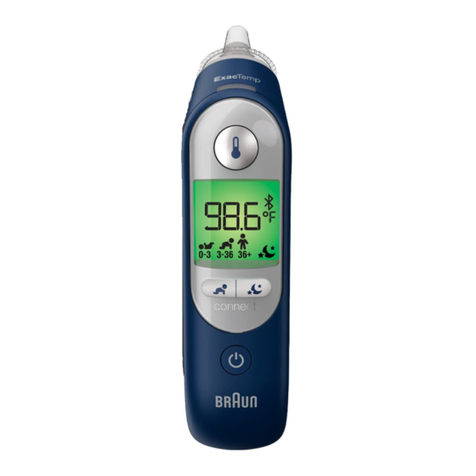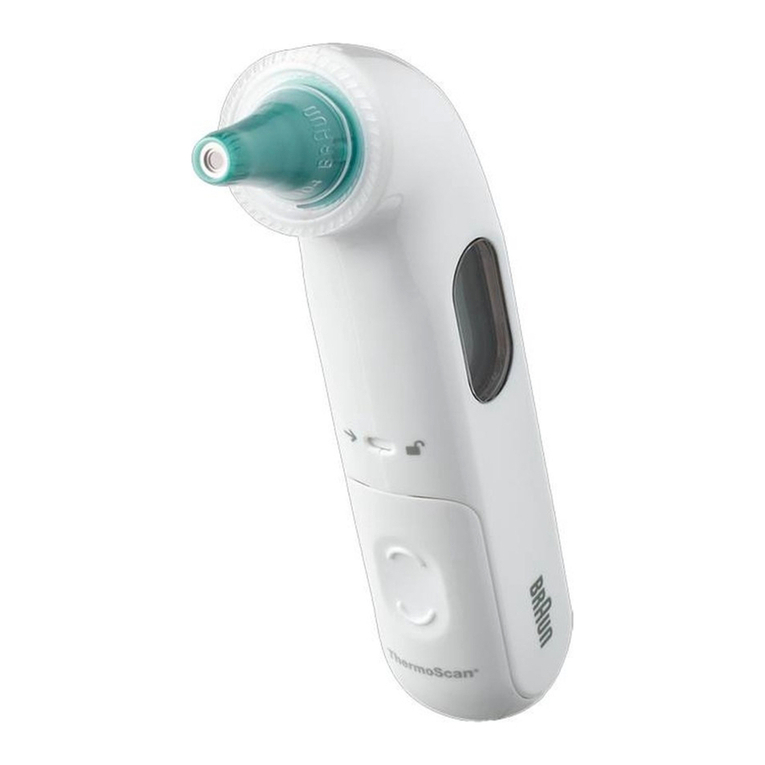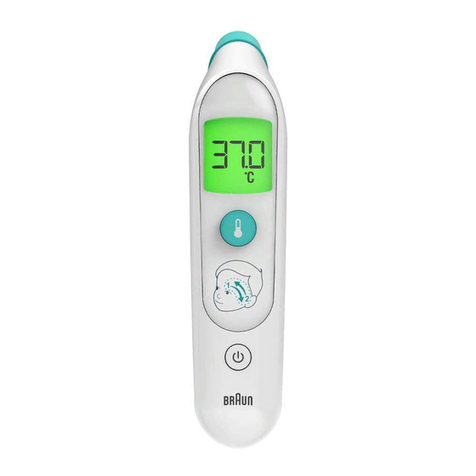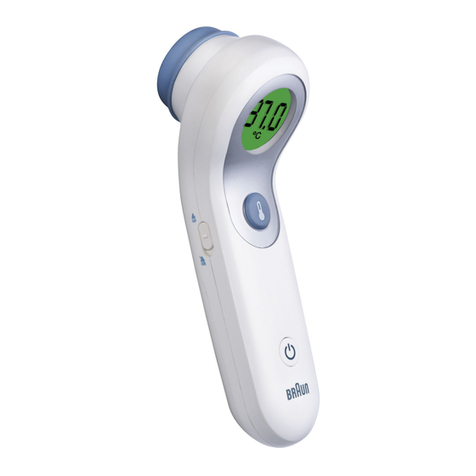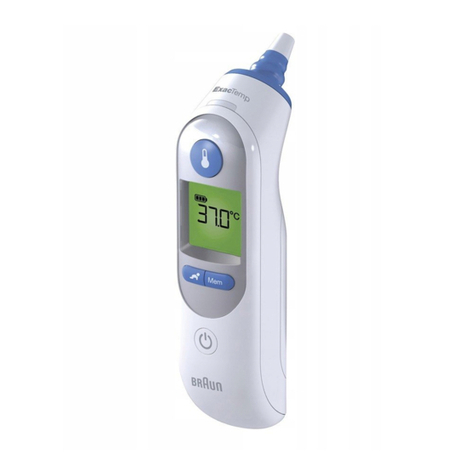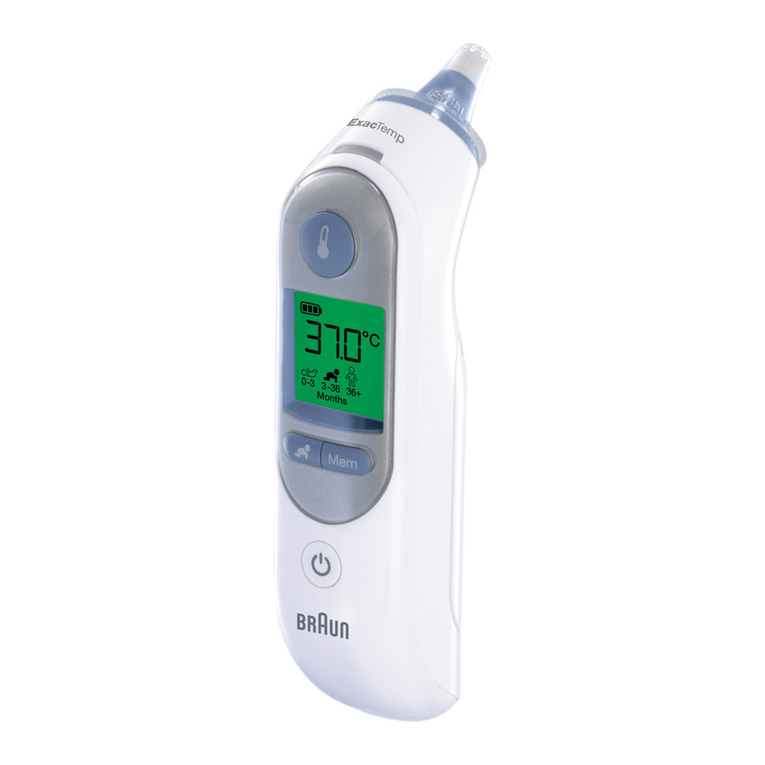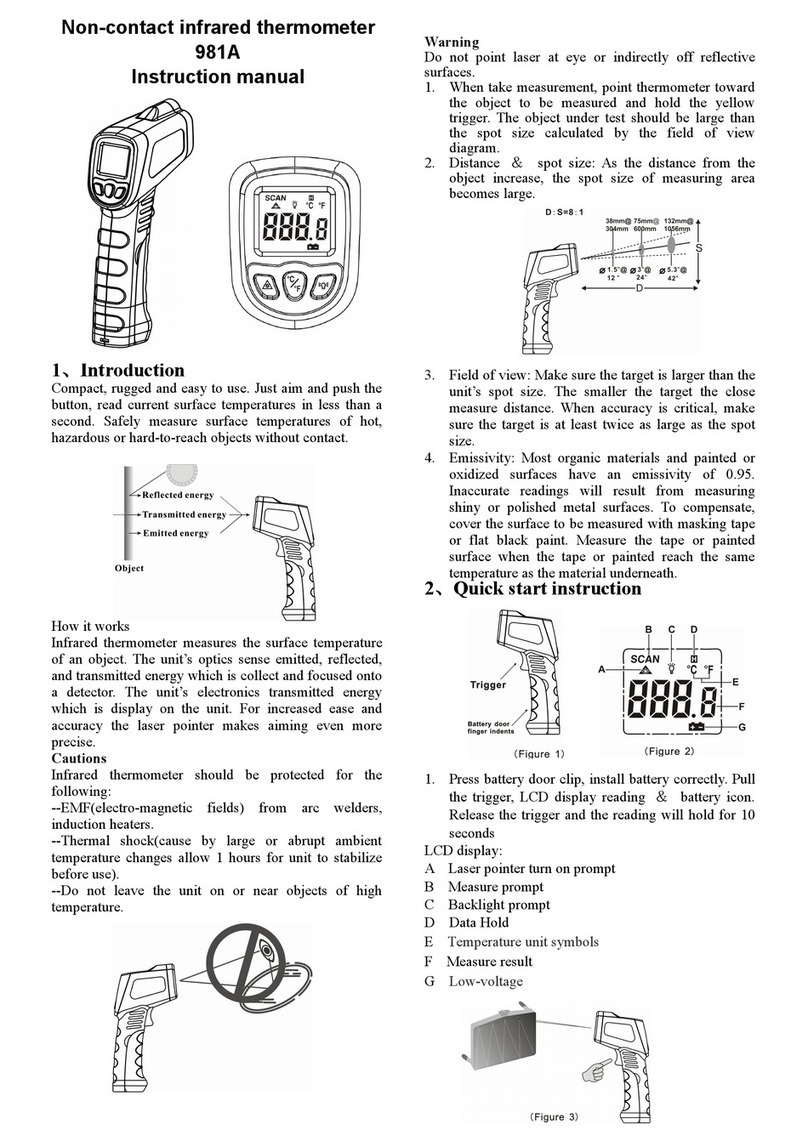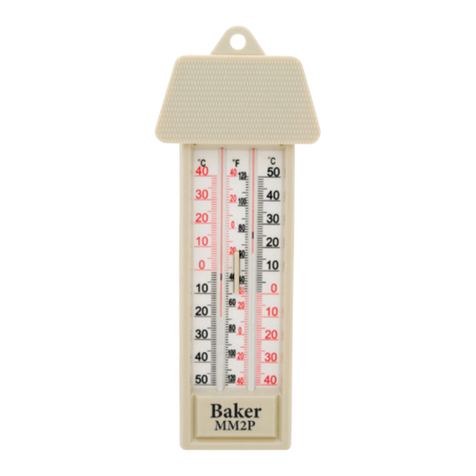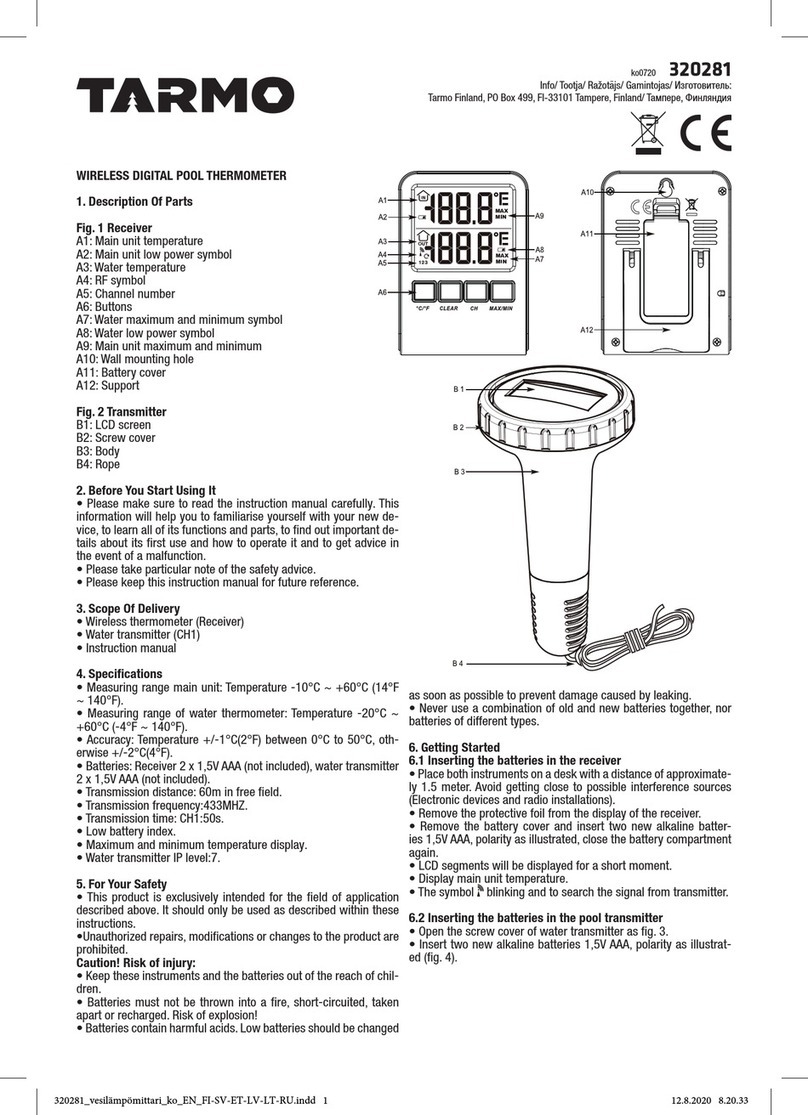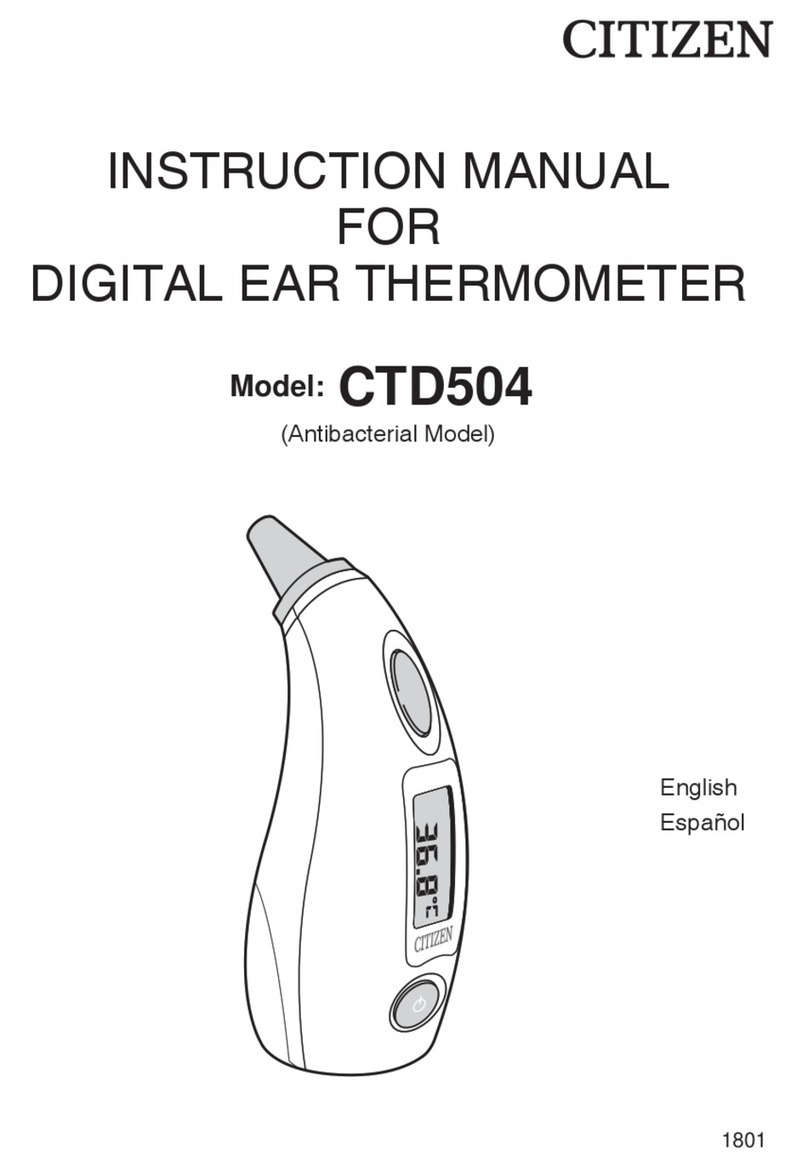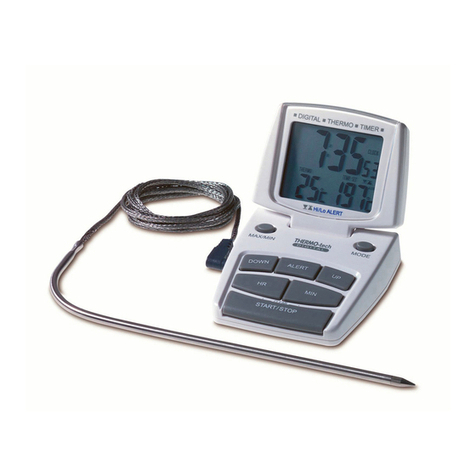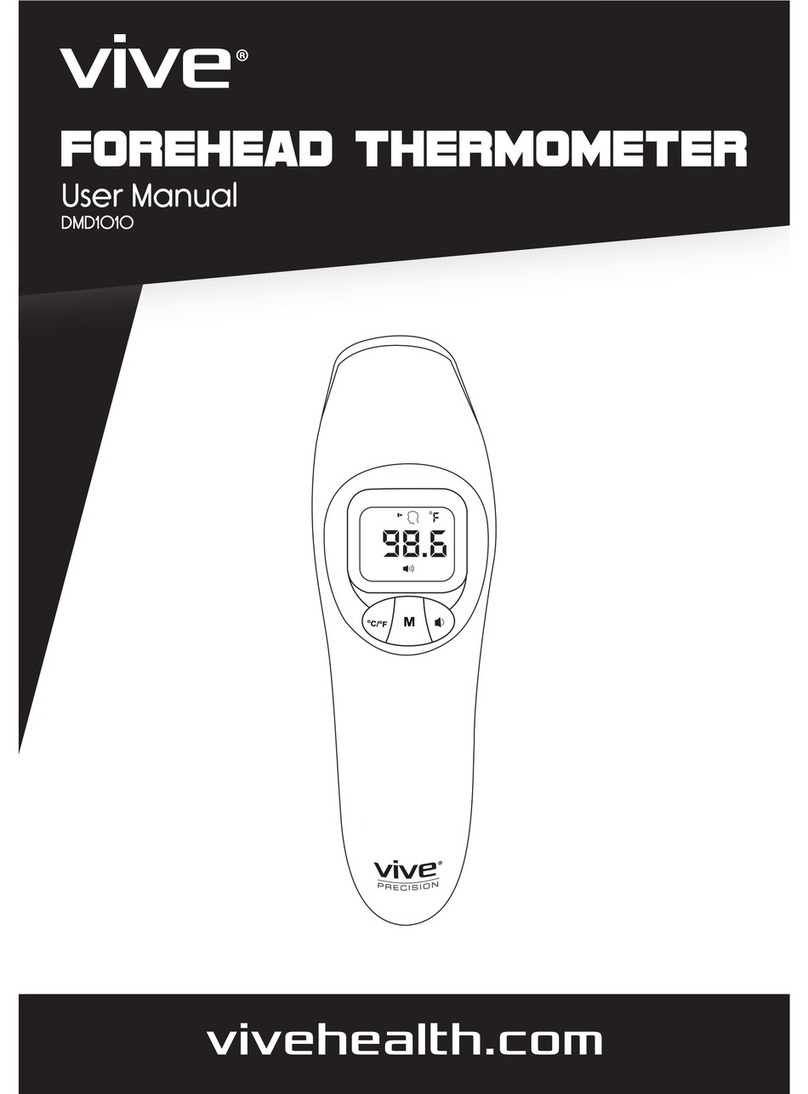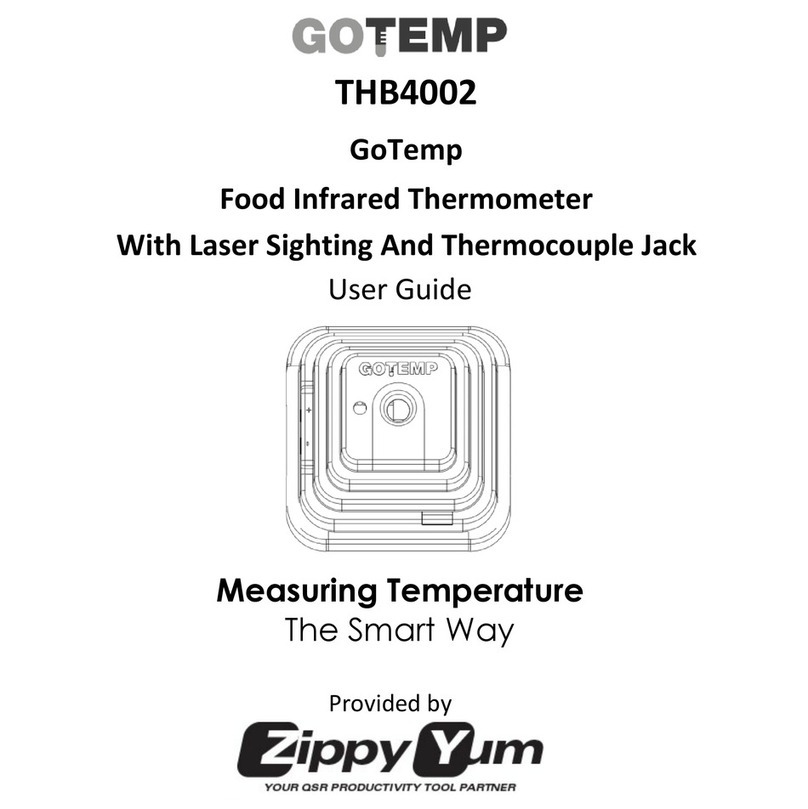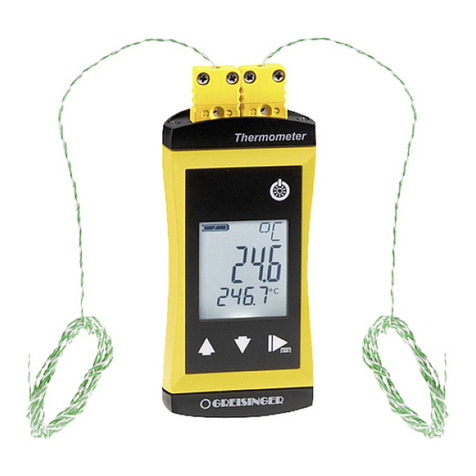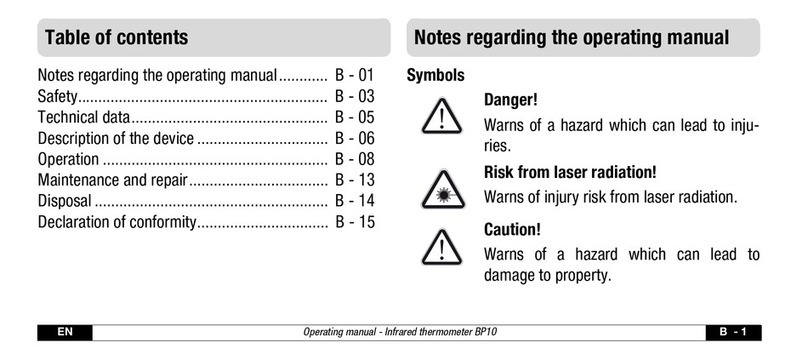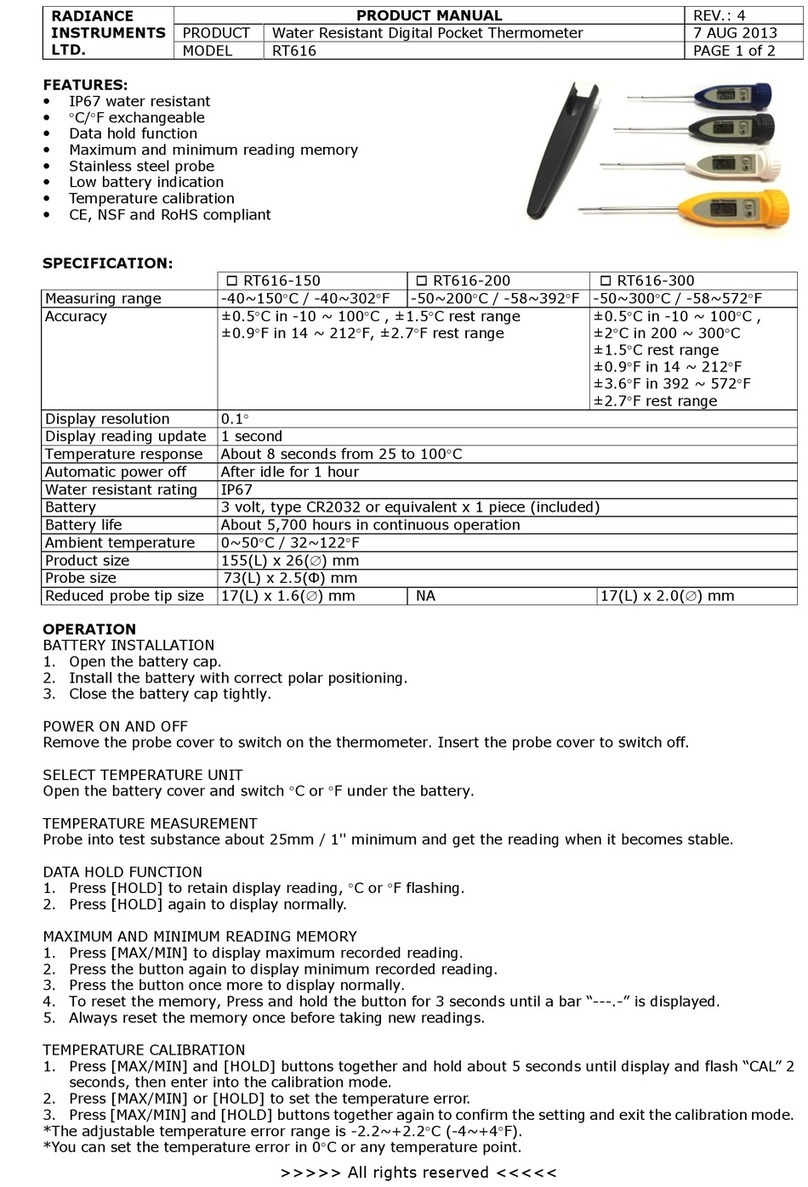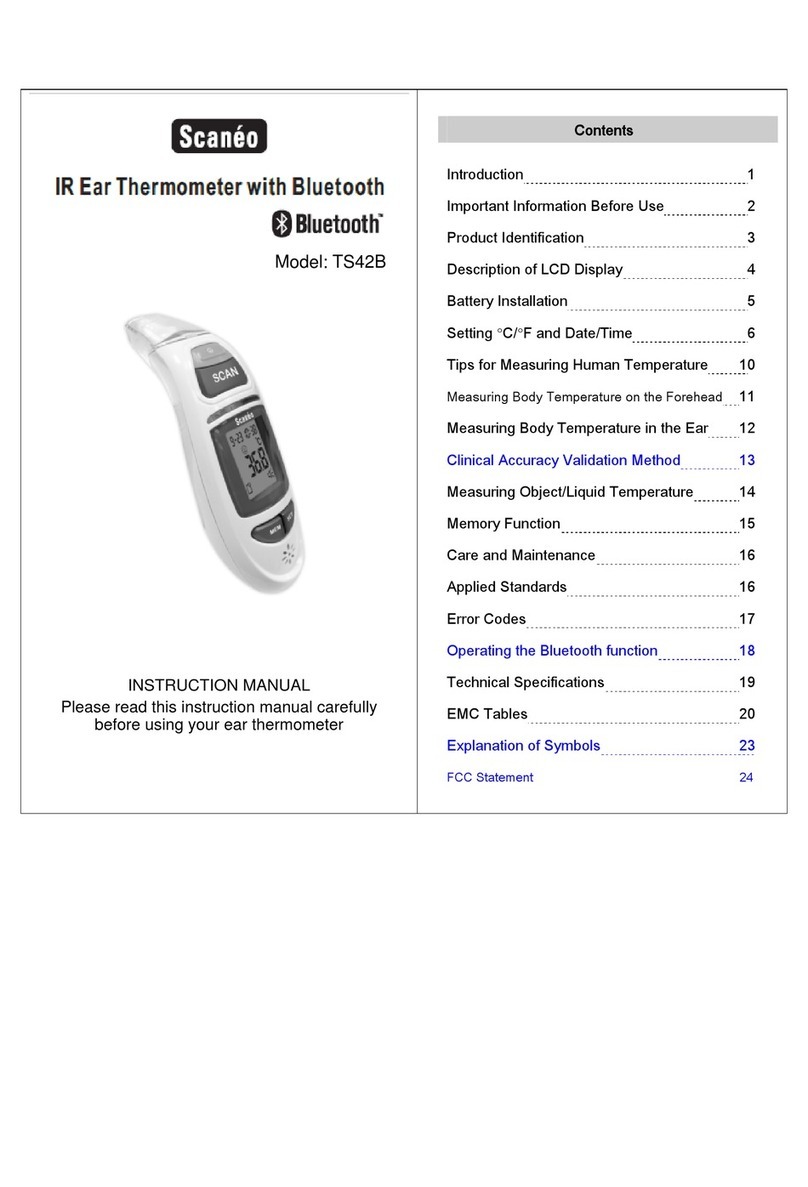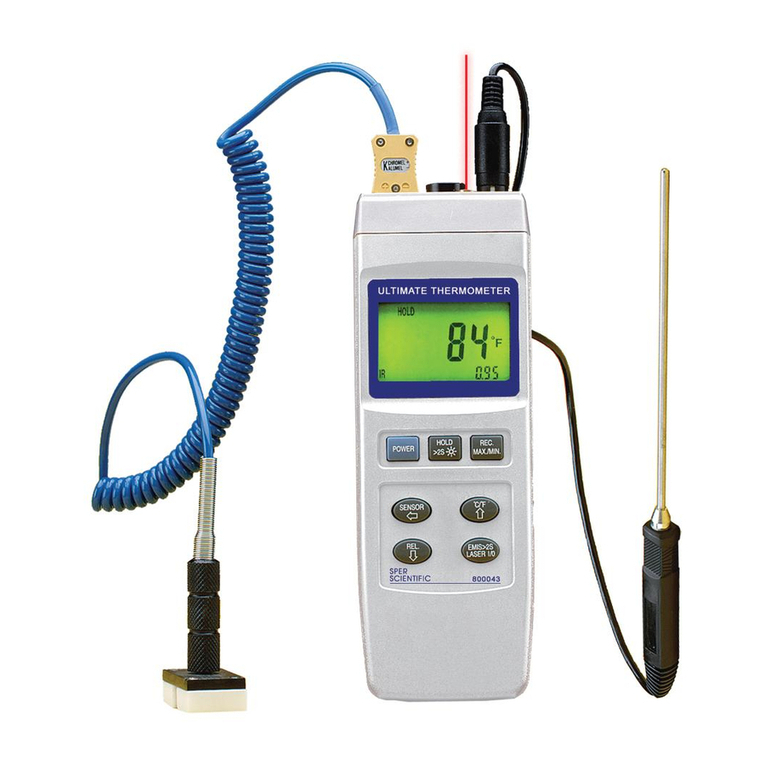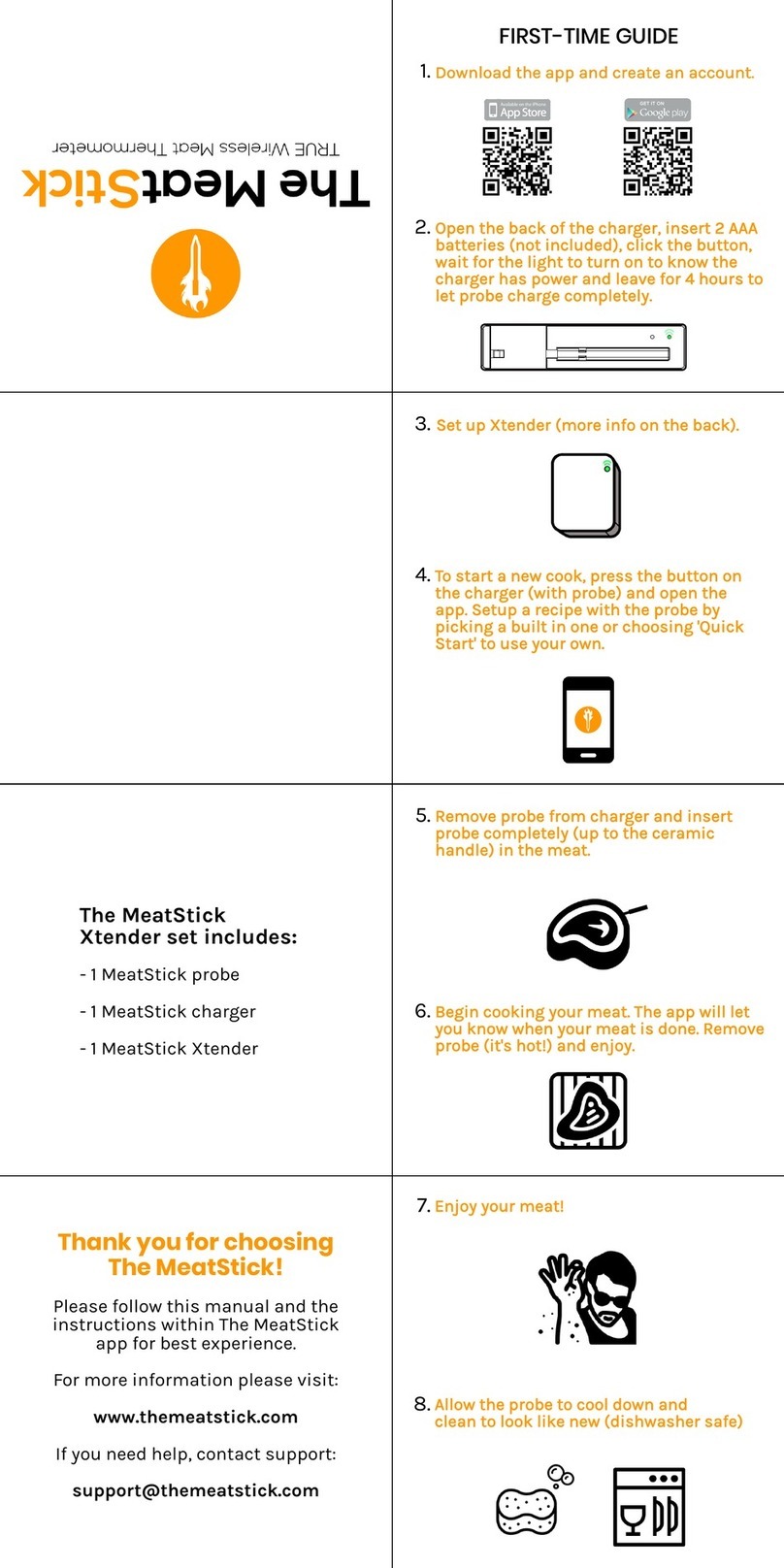
4
Body temperature
Normal body temperature is a range. It varies by site of measurement, and it tends to
decrease with age. It also varies from person to person and fluctuates throughout the
day. Therefore, it is important to determine normal temperature ranges. This is easily
done using Braun ThermoScan®. Practice taking temperatures on yourself and healthy
family members to determine the normal temperature range.
Note: When consulting your physician, communicate that the ThermoScan®temperature
is a temperature measured in the ear and if possible, note the individual’s normal
ThermoScan®temperature range as additional reference.
This thermometer is not intended for pre-term babies or small-for-gestational age babies.
Pre-term is defined as a baby born before 37 weeks of pregnancy are completed. Small-for-
gestational-age is defined as a newborn baby (birth to 4 weeks of age), born at 37 weeks of
pregnancy or later, with a weight below the 10th percentile for newborn babies of the same
gestational age.
It is not intended to interpret hypothermic temperatures. Do not allow children to take
their temperatures
unattended.
Do not modify this equipment without authorization of the manufacturer.
Parents/guardians should call the pediatrician upon noticing any unusual sign(s) or symptom(s).
For example, a child who exhibits irritability, vomiting, diarrhea, dehydration, seizure, changes in
appetite or activity, even in the absence of fever, or who exhibits a low temperature, may still need
to receive medical attention.
People who are on antibiotics, analgesics, or antipyretics should not be assessed solely on
temperature readings to determine the severity of their illness.
Temperature elevation may signal a serious illness, especially in adults who are old, frail, have a
weakened immune system, or neonates and infants. Please seek professional advice immediately
when there is a temperature elevation and if you are taking temperature on:
• Neonates and infants under 3 months (consult your physician immediately if the temperature
exceeds 37.4 °C)
• Patients over 60 years of age
• Patients having diabetes mellitus or a weakened immune system (e.g. HIV positive, cancer
chemotherapy, chronic steroid treatment, splenectomy)
• Patients who are bedridden (e.g. nursing home patient, stroke, chronic illness, recovering from
surgery)
• A transplant patient (e.g. liver, heart, lung, kidney)
Fever may be blunted or even absent in elderly patients.
This thermometer contains small parts that can be swallowed or produce a choking hazard to
children. Always keep the thermometer out of children’s reach.
How does Braun ThermoScan®work?
Braun ThermoScan®measures the infrared heat generated by the
eardrum and surrounding tissues. To help avoid inaccurate temperature
measurements, the probe tip (pre warm tip) is warmed to a temperature close
to that of the human body. When the Braun ThermoScan®is placed in the ear, it
continuously monitors the infrared energy. The measurement is finished and the
result displayed when the thermometer detects that an accurate temperature
measurement has been taken. The displayed result is calibrated to deliver an
oral equivalent temperature reading.
